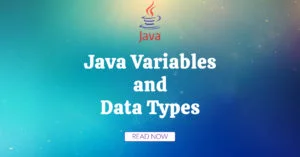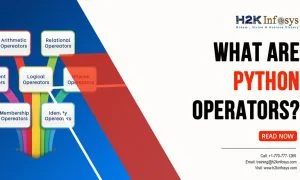Preparing for a Linux System Administrator interview can be daunting, given the wide range of topics and the depth of knowledge required. This guide aims to help you by providing a list of common interview questions along with detailed answers.
1. What is the Linux kernel, and why is it important?
Answer: The Linux kernel is the core component of the Linux operating system. It is responsible for managing the system’s hardware, executing processes, and providing system services. The kernel acts as an intermediary between the hardware and the user-level applications, ensuring efficient and secure operation of the system.
2. What are some common Linux distributions?
Answer: Some common Linux distributions include:
- Ubuntu: Known for its user-friendliness and community support.
- CentOS: Often used in enterprise environments due to its stability.
- Debian: Valued for its robustness and extensive package repository.
- Fedora: Known for its cutting-edge features and Red Hat affiliation.
- Red Hat Enterprise Linux (RHEL): Popular in commercial settings for its support and reliability.
3. How do you check the current running kernel version?
Answer: You can check the current running kernel version using the uname command:
bashCopy codeuname -r
This command displays the kernel version currently in use.
4. Explain the difference between SSH and Telnet.
Answer:
- SSH (Secure Shell): Provides a secure, encrypted connection for remote management and file transfer. SSH uses public-key cryptography for authentication.
- Telnet: An older protocol that provides unencrypted text-based communication. Due to its lack of security, Telnet is largely obsolete and replaced by SSH for secure communications.
5. What is the purpose of the /etc/passwd file?
Answer: The /etc/passwd file stores user account information, including usernames, user IDs, group IDs, home directories, and shell information. Each line in the file represents a single user account.
6. How do you manage services on a system using systemd?
Answer: systemd is a system and service manager for Linux operating systems. Common commands include:
- Start a service:
sudo systemctl start <service_name> - Stop a service:
sudo systemctl stop <service_name> - Enable a service to start at boot:
sudo systemctl enable <service_name> - Disable a service from starting at boot:
sudo systemctl disable <service_name> - Check the status of a service:
sudo systemctl status <service_name>
7. What is cron, and how do you schedule a task using it?
Answer: cron is a time-based job scheduler in Unix-like operating systems. It allows users to schedule tasks (known as cron jobs) to run periodically at fixed times, dates, or intervals. To schedule a task, you edit the crontab file using the command crontab -e and add a cron job in the format:
javascriptCopy code* * * * * /path/to/command
The five asterisks represent the minute, hour, day of the month, month, and day of the week, respectively.
8. How do you manage disk space usage in Linux?
Answer: To manage disk space usage in Linux, you can use several commands:
df: Displays the amount of disk space used and available on filesystems.bashCopy codedf -hdu: Estimates file space usage.bashCopy codedu -sh /path/to/directoryls: Lists files and directories with their sizes.bashCopy codels -lh
9. What is LVM, and why is it used?
Answer: LVM (Logical Volume Manager) is a system for managing logical volumes or filesystems. It allows for flexible disk management, including resizing, adding, and removing storage devices without downtime. LVM is used to create logical partitions, manage disk space more efficiently, and provide greater flexibility compared to traditional partitioning methods.
10. How do you create and mount a filesystem in Linux?
Answer: To create and mount a filesystem:
- Create a partition using
fdiskorparted. - Format the partition with a filesystem (e.g., ext4):bashCopy code
sudo mkfs.ext4 /dev/sdX1 - Create a mount point:bashCopy code
sudo mkdir /mnt/mydata - Mount the filesystem:bashCopy code
sudo mount /dev/sdX1 /mnt/mydata - To mount it automatically at boot, add an entry to
/etc/fstab.
11. How do you set file permissions in Linux?
Answer: File permissions in Linux can be set using the chmod command. Permissions are represented by three sets of three characters (e.g., rwxr-xr--), indicating read (r), write (w), and execute (x) permissions for the owner, group, and others. To change permissions:
bashCopy codechmod 755 filename
This command sets the file permissions to rwxr-xr-x.
12. What is SELinux, and how does it enhance security?
Answer: SELinux (Security-Enhanced Linux) is a security module in the Linux kernel that provides a mechanism for supporting access control security policies. SELinux enforces mandatory access controls (MAC) and can restrict programs and users to the minimum permissions required, enhancing the overall security of the system.
13. How do you monitor system performance in Linux?
Answer: Several tools are available to monitor system performance:
top: Displays real-time system summary information, including CPU and memory usage.htop: An enhanced version oftopwith a more user-friendly interface.vmstat: Reports virtual memory statistics.iostat: Reports CPU and input/output statistics.netstat: Displays network connections, routing tables, and interface statistics.
14. Explain the difference between hard links and soft links.
Answer:
- Hard Link: A direct reference to the physical data on the disk. Multiple hard links to a file share the same inode and data.
- Soft Link (Symbolic Link): A pointer to another file or directory. Soft links are independent of the target file and can cross filesystem boundaries.
15. What are iptables, and how do you configure them?
Answer: iptables is a user-space utility program that allows a system administrator to configure the IP packet filter rules of the Linux kernel firewall. It is used to set up, maintain, and inspect the tables of IP packet filter rules. To add a basic rule to allow SSH traffic:
bashCopy codesudo iptables -A INPUT -p tcp --dport 22 -j ACCEPT
This command appends a rule to the INPUT chain to accept TCP packets on port 22.
16. What is the purpose of the /etc/hosts file?
Answer: The /etc/hosts file is used to map hostnames to IP addresses locally on the system. It provides a static lookup for hostnames before querying the DNS server, allowing for quicker name resolution for frequently accessed hosts.
17. How do you secure a Linux server?
Answer: Securing a Linux server involves several steps:
- Keep the system updated: Regularly apply security patches and updates.
- Firewall configuration: Use
iptablesorfirewalldto restrict access. - SSH security: Disable root login, use SSH keys instead of passwords, and change the default SSH port.
- Disable unnecessary services: Turn off services that are not in use.
- User management: Implement strong password policies and use sudo for administrative tasks.
- SELinux/AppArmor: Use security modules to enforce security policies.
18. What is swap space, and why is it important?
Answer: Swap space is a portion of the disk used as an extension of RAM when the physical memory is full. It allows the system to continue operating by swapping out inactive pages of memory to disk. Swap is important for handling memory-intensive applications and preventing out-of-memory errors.
19. How do you configure networking on a Linux server?
Answer: To configure networking on a Linux server:
- Edit the network configuration file (e.g.,
/etc/network/interfaceson Debian-based systems or/etc/sysconfig/network-scripts/ifcfg-eth0on Red Hat-based systems). - Set the appropriate IP address, netmask, gateway, and DNS servers.
- Restart the networking service to apply the changes:bashCopy code
sudo systemctl restart networkingorbashCopy codesudo systemctl restart network
20. What is the purpose of the /var/log directory?
Answer: The /var/log directory contains system and application log files. These logs are essential for monitoring system activity, diagnosing problems, and auditing security events. Common log files include syslog, auth.log, and dmesg.
Conclusion
Preparing for a Linux System Administrator interview requires a solid understanding of various topics, from basic commands to advanced system management. This guide covers some of the most important questions and answers that you may encounter during an interview. By studying these questions and gaining practical experience, you can increase your chances of success and demonstrate your expertise to potential employers.


























